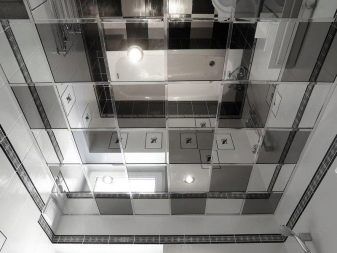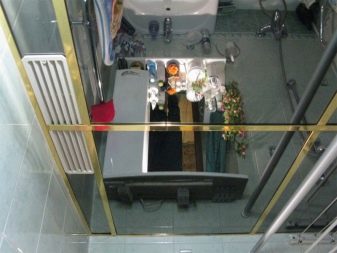Mirrored ceiling in the bathroom: pros and cons, design options

The mirrored ceiling in the bathroom looks very original and stylish. It is not a frequently used element of bathroom design, since the installation of mirror plates is associated with certain difficulties.
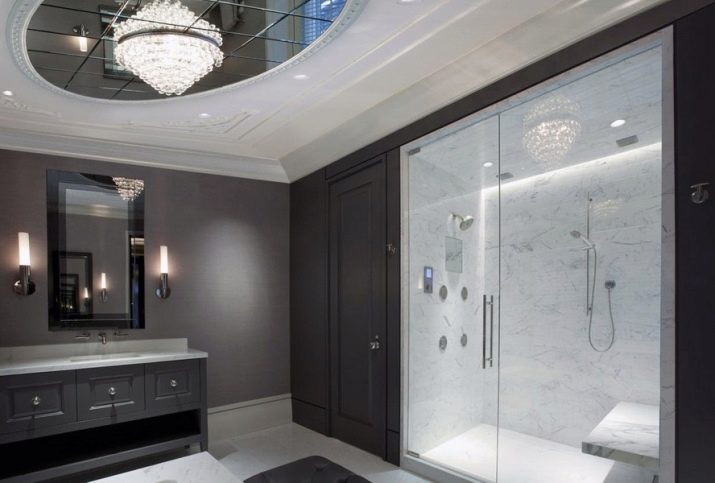
Advantages and disadvantages
The advantage of a mirrored ceiling is that it makes the interior look much more interesting - the ceiling reflects all objects in the room, giving the bathroom the illusion of an additional, "second" space.
At the same time, the mirrored ceiling is unexpectedly practical solution. After all, it is in the bathroom that the decoration must be carried out using moisture-resistant materials. For this, tiles and special waterproof drywall (GVL) are used. But all this looks familiar and traditional, while the mirrored ceiling has, indeed, ideal properties for installation in the bathroom.

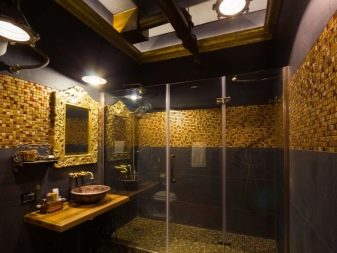
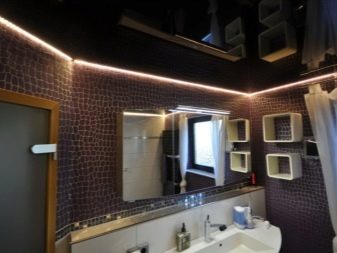
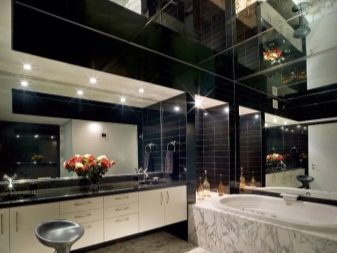
Mirror slabs are 100% moisture resistant - even getting water directly on their surface will not damage the ceiling in any way. Simply wipe down the surface. In addition, modern mirror materials have a good safety margin. They can be mounted on any surface and combined with other types of finishes.


Among the disadvantages of the ceiling mirror coating is its high cost. In addition, the mirror requires careful handling due to its fragility. Even a minor impact can lead to cracks, and mirror replacement can be expensive depending on the material.
Mirrors are susceptible to dirt - stains and dust are immediately visible. Such a coating will require regular wet cleaning. However, this will not create any particular difficulties.You can simply wipe it down with a rag from time to time to keep the surface clean.
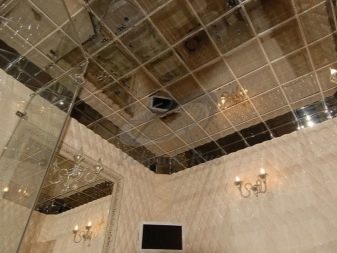

Partly the disadvantage is the complexity of the installation, so it is important to take into account the level of competence of the workers who will perform the installation.
Varieties
Today there are 4 types of mirror coatings for ceilings:
- gypsum-based mirror film;
- mirror plate;
- aluminum ceiling;
- mirrored stretch ceiling.
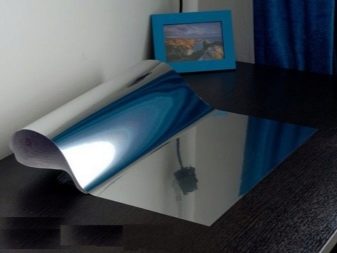
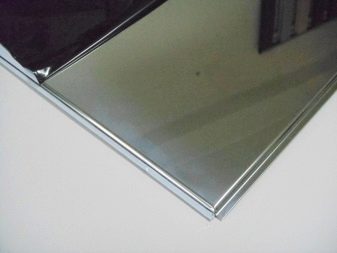


The first option is easier in terms of installation. It is not particularly different from working with drywall, except that it requires careful handling of the mirror surface.
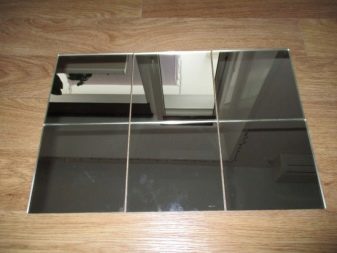

Installing mirror plates is a little more difficult.... These panels are quite heavy, they will have to be installed by two or three people. If we are talking about mirror plates made of polystyrene, then the actual process of fixing them on a stretch ceiling is quite simple. They are attached to special glue.

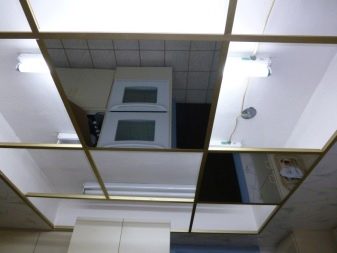
But mirror plates in the classic version, made of glass, are much more difficult to fix - this is a completely special technology. Most likely, you will have to order installation from specialists, and the plates themselves, as already mentioned, are expensive.

Depending on the specifics of the order, the surface of the mirror plates can be smooth or embossed, wavy.
Compared to glass aluminum ceiling covering may seem like a more practical solution. It does not break or rust. Modern aluminum coatings are suitable for use as bathroom ceilings. They are reliable and unpretentious.
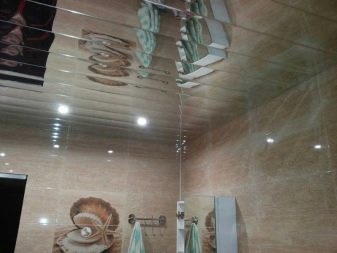

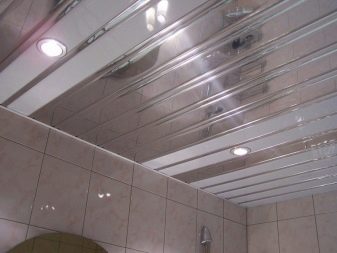
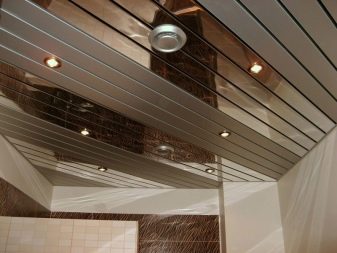
You can also choose option with a stretch ceiling. Stretch ceiling has become a part of the latest trends in interior design. It is fashionable and modern, although it should be understood that such a ceiling will not be completely mirrored. Its construction uses a glossy film, the reflection on which will be blurred.
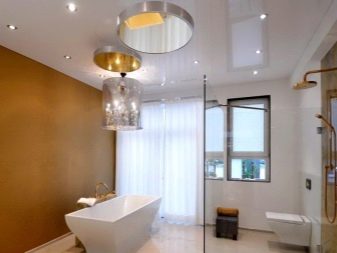
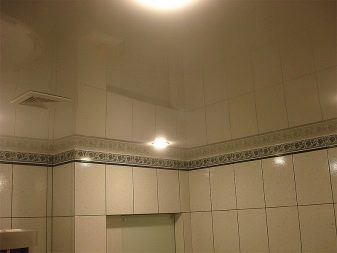
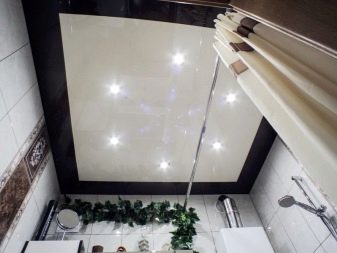

Mounting
It is important to properly prepare the original surface before installation. In this case, its old finish (wallpaper, painting) is usually removed using soapy water or an appropriate solvent. These works are needed if you plan to mount the mirror coating directly on the ceiling surface.
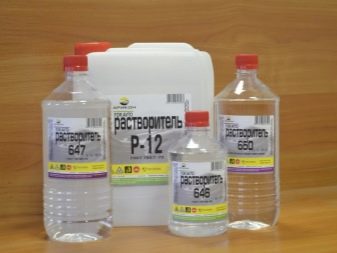
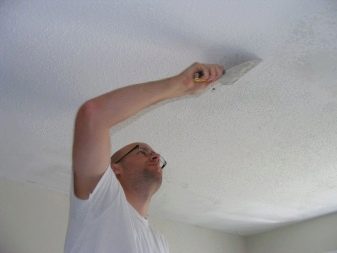
There is also another option. You can make a frame from a metal profile, and attach mirrors to it. Then you do not need to remove the old coating from the ceiling, it is enough to prime its surface.
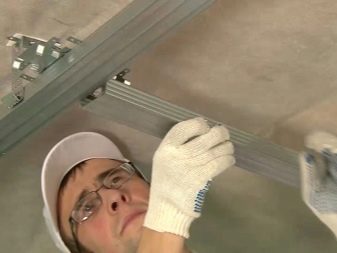

The installation of the mirror coating itself is carried out using screws or glue. Screws are used if you first assembled the frame, or if you are installing a ceiling plane made of aluminum mirror strips.
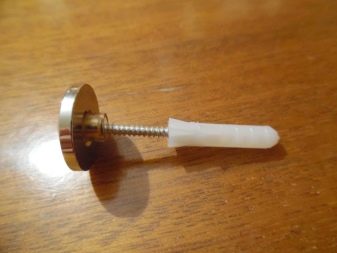
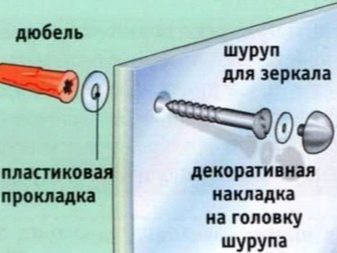
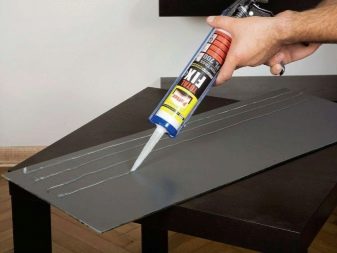
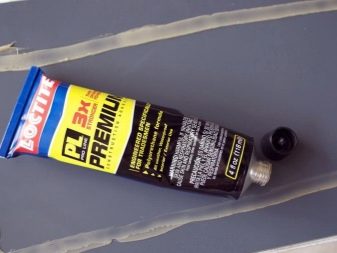
The frame and suspension system, mounted in front of the mirror surface itself, allows great freedom in the design and choice of the mirror surface shape. But if you order work from builders, then keep in mind - this design will cost you more than installing mirrors directly on the main ceiling.
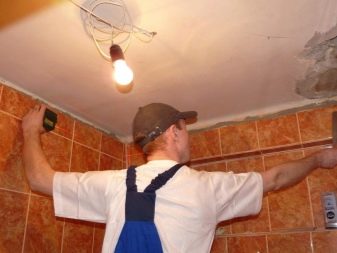
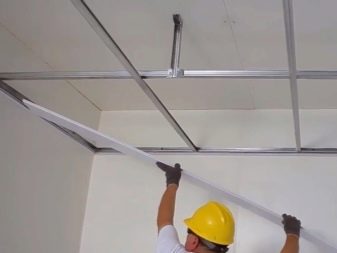
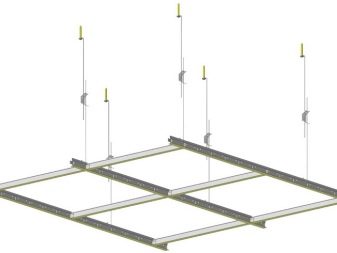

To install mirror plates without a suspension system, it is important to maintain a level surface during installation. For this, a level or level is useful. This will give the mirror finish a good look.
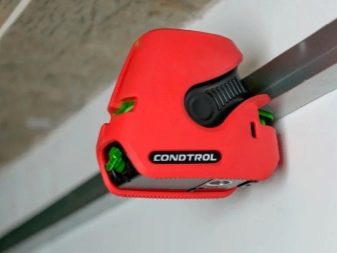

Design options
When choosing a design, the main points to look out for are the color of the mirrors and the decor. You can choose from a variety of shades on the market to match the color of the ceiling with the overall interior design.
Popular color options found in most mirror finish stores are bronze, green, blue, pink, antique, gray.
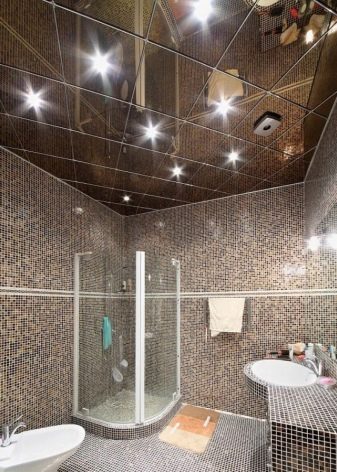
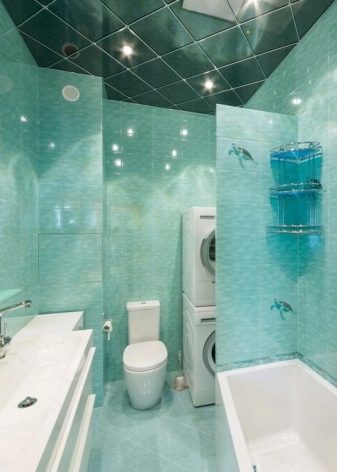
Black mirrors are also used, which effectively set off the color of walls and furniture. They are good with backlighting as mirrors have excellent reflective characteristics.


As for the decor, There are several common ways to make a design more complex and interesting: the use of tiles of different shapes, mosaics and mirror strips (slats). Today, mirror panels with patterns, ornaments, surfaces of complex shapes (for example, wavy) are popular.
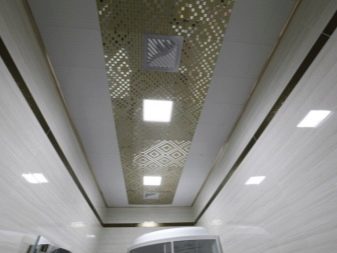
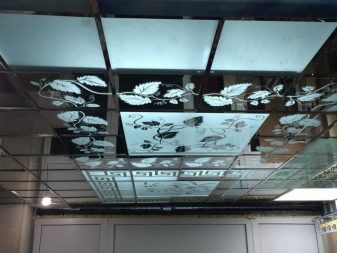
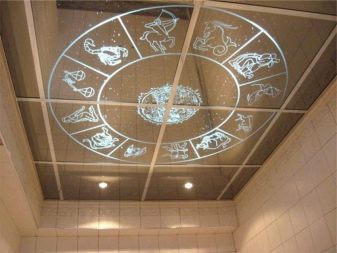
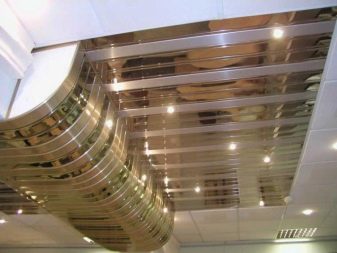
Mirror plates of different shapes go well with a wide variety of finishing materials. They add complexity to the design, while the same rectangular panels look boring. You can use round and 6-sided mirrors, as well as vary the dimensions of the slabs, as long as this does not create too much problems during installation.
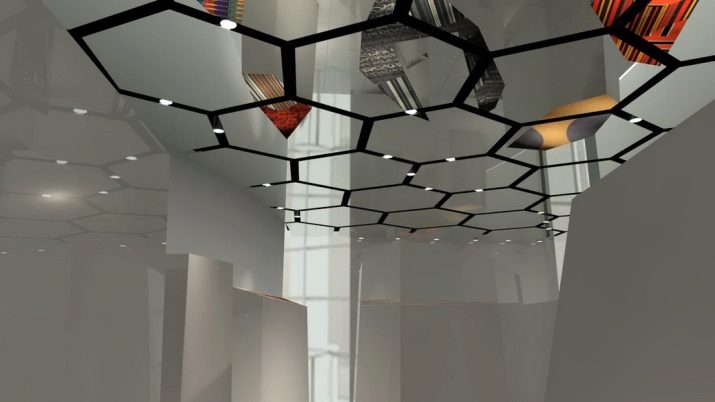
The design with mirrored stripes will also look quite original. Their peculiarity is that they reflect objects only partially. Mirror stripes in the bathroom interior will give it lightness and grace.
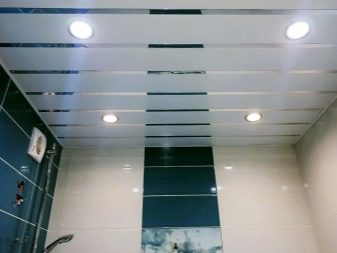

The richest choice of styles and design solutions is offered by mirror panels with patterns and ornaments. You can choose the shades and character of the ornament to your liking. In the bathrooms, a wide variety of decor options are used: both classic, for example, in antique style, and modern.
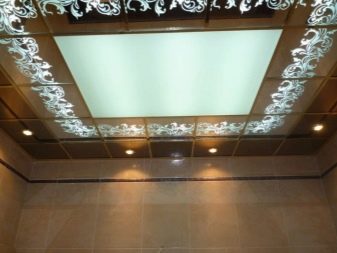
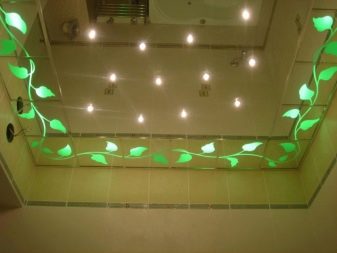
When applying an ornament to a reflective coating, two techniques are used: a colored ornament or a colorless one. Colorless is applied without the use of varnish. This pattern will reflect the color of the backlight.
As for the colored ornament, it is obtained by applying varnish on a colorless one and thereby achieving a special brightness, creating the impression of volume.
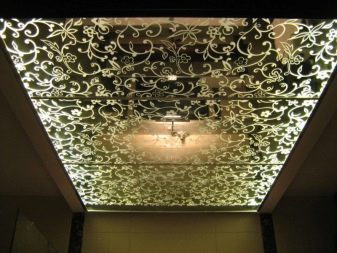
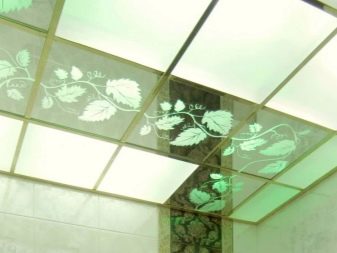
The original solution would be ceiling with a complex (non-smooth) surface... Waves on it, for example, refract light in an interesting way, scatter it.
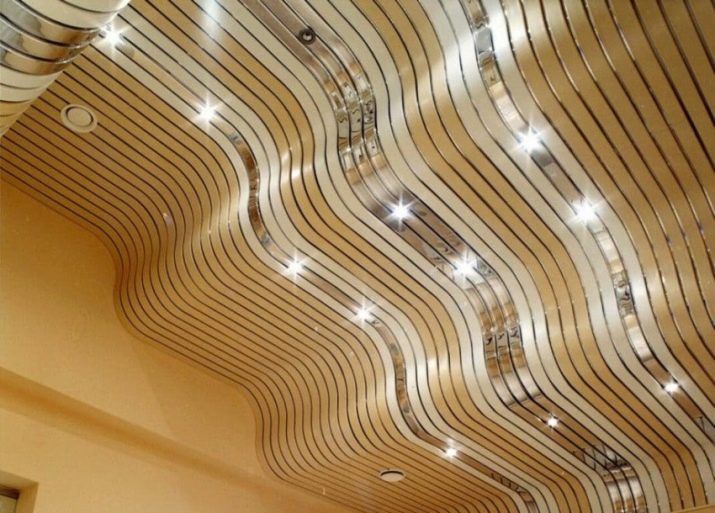
You can also play with the clarity of the reflection using coatings. with different reflectivity. These can be natural mirrors, as well as those with a reflective effect. To create the illusion of soft light diffusion, you can use matt mirror surfaces.
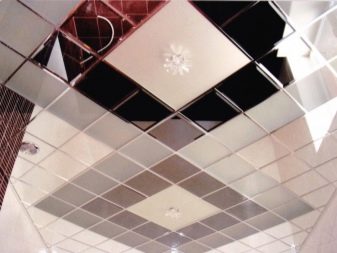
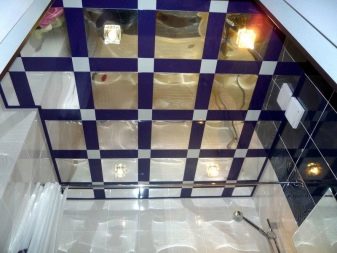

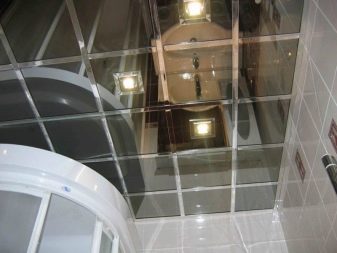
Mosaics are often used in the bathroom. This is a classic design that has been used since the olden days. Mirrored mosaics are a great way to make your ceiling look more interesting.

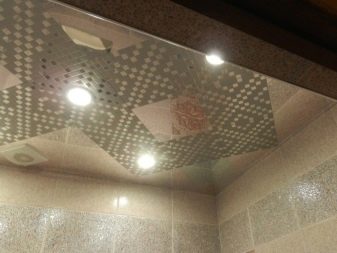
But it is worth taking care that the ceiling still retains the ability to realistically reflect objects and does not distort them too much (to avoid the effect of chaotic reflections, as in a laughing room).
When using reflective mosaics and mirrors with a complex surface in the bathroom interior, it should be borne in mind that such elements will cast glare on the walls and floor... Perhaps, when choosing such types of design, it is worth arranging the rest of the interior a little more minimalist so as not to visually overload your bathroom.
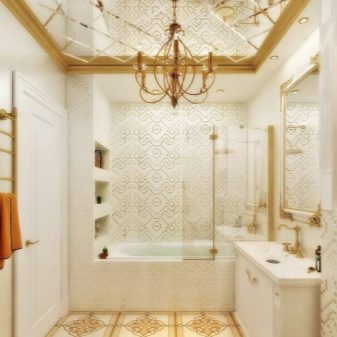

Either you can use mirrors more sparingly or apply a matte effect as discussed above.
Lighting
When the structure is ready, you need to take care of an important element of the mirrored ceiling - lighting.
Among the lighting electrical appliances for ceilings, point and pendant lamps are distinguished. In addition, there are surface-mounted and recessed spotlights. The practical difference between them is the distance between the mirrored and main ceilings; if you do not want to underestimate the mirrored ceiling (more than 15 cm from the main one), then you need to use overhead lamps.
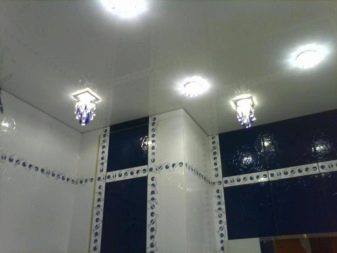
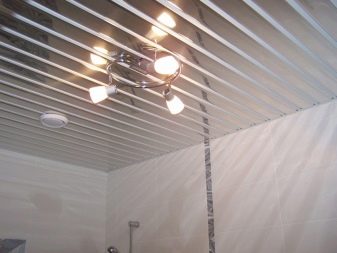
Spotlights are often used in bathrooms. Sometimes you can also use a chandelier. In combination with a ceiling of a more complex shape, chandeliers are also used in order to emphasize its design (for example, with multi-level stretch ceilings).
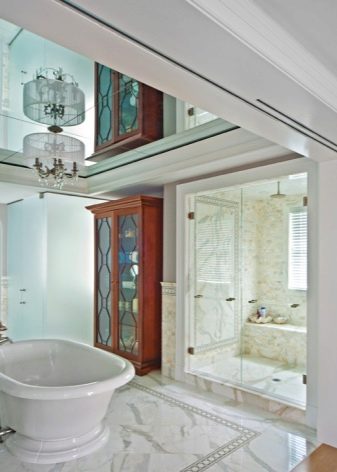
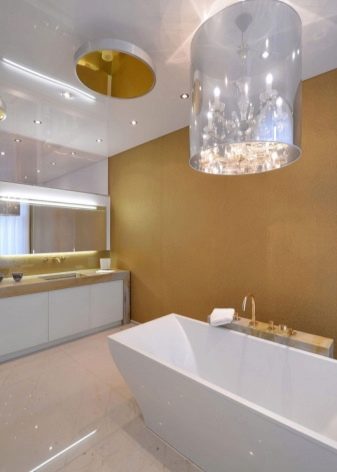
In addition to those listed, panel lights and LED strips are used. As a rule, they are hidden in the ceiling structure to obtain soft, diffused illumination.
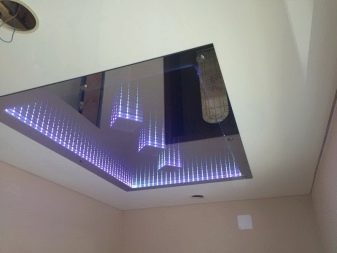

conclusions
Mirrored ceiling is a stylish solution for bathroom design. It also has practical properties.In this case, nevertheless, it should be protected from pollution, frequent exposure to hot steam, especially from mechanical damage.
On the market there are both ready-made sets of mirrors for installation (in the form of a mirror film, polystyrene plates and classic mirrors), as well as proposals for the manufacture of panels to order. In the latter case, you can discuss with the masters the size and shape of mirror products, their shades and decor, as well as installation options.
